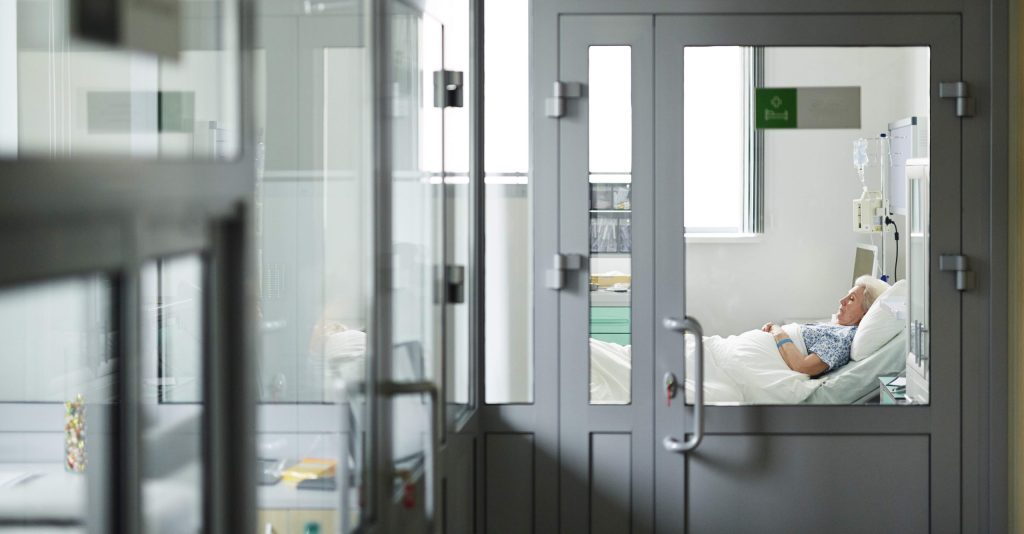I have a virtual tour on my website and would like an audit.
I don't have a virtual tour yet, would love a demo to see how it works.
As healthcare facilities navigate an increasingly competitive and patient-centric landscape, the need for innovative strategies to build trust and reduce patient anxiety has never been more critical. Hospitals and medical centers are facing significant obstacles, including patient apprehension about unfamiliar facilities, increased competition from alternative healthcare providers, and the challenge of conveying their commitment to quality care through traditional marketing channels. In this article, we will explore the key pain points healthcare facilities are facing and provide data-backed strategies to help healthcare leaders overcome these challenges and build patient confidence in 2025.

The Healthcare Landscape: Challenges and Opportunities
Patient Anxiety and Uncertainty:
Many patients experience significant anxiety when visiting a new healthcare facility or provider. According to the American Hospital Association, first-time patient anxiety contributes to higher no-show rates and delayed care-seeking behavior, impacting both patient outcomes and facility revenue.
Increased Competition:
With the proliferation of urgent care centers, specialized clinics, and telehealth providers, competition for patients has intensified. Healthcare facilities must differentiate themselves and provide compelling reasons for patients to choose their services.
Trust Deficit in Healthcare:
Traditional marketing methods fail to address the fundamental trust gap patients experience when selecting healthcare providers. Facilities are seeking more authentic and transparent approaches to demonstrate their commitment to patient care and safety.

Strategies for Building Patient Confidence
1. Transparent Facility Communication:
– Provide clear information about facility cleanliness, safety protocols, and quality standards.
– Utilize patient testimonials and satisfaction data to demonstrate commitment to care excellence.
2. Leveraging Digital Platforms:
– Actively engage on platforms like Facebook and healthcare review sites to build community trust.
– Share patient success stories, staff spotlights, and behind-the-scenes glimpses of facility operations.
– Invest in targeted digital advertising to reach patients researching healthcare options.
3. Emphasizing Quality and Accreditation:
– Highlight certifications, awards, and accreditations that demonstrate commitment to excellence.
– Position your facility as the trusted choice for quality healthcare in your community.
4. Enhancing Patient Experience:
– Implement patient-centered care models, streamlined check-in processes, and comfort-focused amenities.
– Focus on creating positive experiences that drive referrals and patient loyalty.
5. Embracing Technological Innovations:
– Incorporate patient portals, online scheduling, and telehealth options to improve accessibility.
– Provide convenient, modern healthcare experiences that meet patient expectations.
6. Leveraging Interactive Virtual Facility Tours:
– Offer immersive virtual tours to familiarize patients with your facility before their visit.
– Showcase clinical areas, patient rooms, waiting areas, and advanced medical technology.
– Reduce patient anxiety by making the unfamiliar familiar.
The Power of Virtual Tours in Healthcare Marketing
Virtual facility tours have emerged as a game-changer in healthcare marketing. By providing an immersive and transparent experience, virtual tours allow prospective patients to explore clinical environments, understand facility layouts, and build confidence before their first appointment.

Benefits of Virtual Tours
1. Reduced Patient Anxiety:
Virtual tours significantly reduce first-time patient anxiety by familiarizing them with the facility environment. When patients know what to expect—from parking to check-in to treatment areas—their stress levels decrease, leading to better health outcomes and higher satisfaction scores.
2. Increased Patient Confidence:
Interactive virtual tours demonstrate your facility’s commitment to transparency and patient-centered care. By showcasing modern equipment, clean environments, and comfortable spaces, you build trust before the first interaction.
3. Lower No-Show Rates:
When patients feel comfortable and confident about their upcoming visit, no-show rates decrease significantly. Virtual tours help patients mentally prepare for their appointments, leading to better attendance and more efficient scheduling.
4. Competitive Differentiation:
Virtual tours provide a powerful differentiator in a crowded healthcare marketplace. Few facilities offer this level of transparency, allowing you to stand out as an innovative, patient-first organization.
5. Family and Caregiver Peace of Mind:
Virtual tours can be customized to address specific patient populations whether showcasing pediatric-friendly environments for concerned parents or highlighting accessibility features for elderly patients and their caregivers. This personalized approach increases care-seeking behavior.

Best Practices for Healthcare Virtual Tours
- Showcase main entrances, parking areas, and wayfinding for reduced arrival stress
- Highlight patient registration and waiting areas to set comfort expectations
- Feature treatment rooms, diagnostic imaging areas, and surgical suites (where appropriate)
- Include patient rooms and recovery areas for inpatient facilities
- Showcase advanced medical technology and equipment to demonstrate quality capabilities
- Feature amenities like cafeterias, chapels, and family waiting areas
- Include staff introductions and patient testimonial videos for authenticity
- Offer interactive elements with educational hotspots about services and specialties
- Provide accessibility information for patients with mobility concerns
- Optimize for mobile devices to reach patients researching on smartphones
- Include clear calls-to-action to schedule appointments or request tours
- Ensure HIPAA compliance throughout all virtual content

Conclusion
In the face of evolving challenges in the healthcare landscape, facilities must embrace innovative strategies to build patient trust and reduce anxiety. By leveraging transparent communication, digital engagement, quality emphasis, enhanced patient experiences, and technological innovations, healthcare organizations can position themselves for sustained success.
Among these strategies, interactive virtual facility tours stand out as a powerful tool to reduce patient anxiety, increase confidence, and differentiate from competitors. By creating immersive and transparent virtual experiences, healthcare facilities can demonstrate their commitment to patient-centered care and establish meaningful connections before the first appointment.
As healthcare leaders navigate the path to 2025, integrating virtual tours into their patient acquisition strategy will be a key driver of trust-building, reduced no-shows, and long-term patient loyalty.























